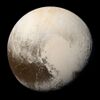Astronomy:(278361) 2007 JJ43
From HandWiki
| Discovery[1] | |
|---|---|
| Discovered by | Palomar Obs. |
| Discovery site | Palomar Obs. |
| Discovery date | 14 May 2007 |
| Designations | |
| 2007 JJ43 | |
| Minor planet category | TNO[1][2] · ScatNear[3] |
| Orbital characteristics[5][1] | |
| Epoch 27 August 2011 (JD 2455800.5) | |
| Uncertainty parameter 2 | |
| Observation arc | 4813 days (13.18 yr) |
| Earliest precovery date | 10 May 2002 (NEAT) |
| |{{{apsis}}}|helion}} | 55.3707 astronomical unit|AU |
| |{{{apsis}}}|helion}} | 40.2776 AU |
| 47.82 AU | |
| Eccentricity | 0.1578 |
| Orbital period | 330.74 a (120801 d) |
| Mean anomaly | 331.84° |
| Inclination | 12.0623° |
| Longitude of ascending node | 272.493° |
| |{{{apsis}}}|helion}} | ≈ 2 April 2037[4] ±6 days |
| 9.02° | |
| Physical characteristics | |
| Mean diameter | 530 km (est. at 0.08)[6] 457 km (est. at 0.135)[2] 610+170 −140 km[7] |
| Rotation period | |
| Geometric albedo | 0.13[7] |
| Apparent magnitude | 20.8[8] |
| Absolute magnitude (H) | |
(268361) 2007 JJ43 is a large trans-Neptunian object (TNO) orbiting the Sun near the outer edge of the Kuiper belt. Its discovery images were taken in 2007, and its absolute magnitude of 4.5 is one of the twenty brightest exhibited by TNOs. Assuming it has a typical albedo, this would make it roughly the same size as Ixion (about 530–620 km diameter).
In a paper in the Astrophysical Journal Letters András Pál and colleagues estimate a diameter for (278361) 2007 JJ43 of 610+170
−140 km.[7]
Observations by Brown in 2012, using the W. M. Keck Observatory, suggest that (278361) 2007 JJ43 does not have a companion.[10]
(As of 2014), it is about 41.3 AU from the Sun.[8]
See also
References
- ↑ 1.0 1.1 1.2 1.3 1.4 JPL Small-Body Database Browser: 2007 JJ43 Retrieved: 2011-06-18
- ↑ 2.0 2.1 Wm. Robert Johnston (18 August 2020). "List of Known Trans-Neptunian Objects". Johnston's Archive. http://www.johnstonsarchive.net/astro/tnoslist.html. Retrieved 23 July 2021.
- ↑ Marc W. Buie. "Orbit Fit and Astrometric record for 278361". SwRI (Space Science Department). http://www.boulder.swri.edu/~buie/kbo/astrom/278361.html. Retrieved 2018-02-18.
- ↑ JPL Horizons Observer Location: @sun (Perihelion occurs when deldot changes from negative to positive. Uncertainty in time of perihelion is 3-sigma.)
- ↑ AstDys 2007 JJ43 Summary Retrieved: 2012-02-03
- ↑ Michael E. Brown. "How many dwarf planets are there in the outer solar system? (updates daily)". California Institute of Technology. Archived from the original on 2019-05-31. https://web.archive.org/web/20190531134353/http://web.gps.caltech.edu/~mbrown/dps.html. Retrieved 2019-08-13.
- ↑ 7.0 7.1 7.2 7.3 Pál, A. et al. (2015). "Pushing the Limits: K2 Observations of the Trans-Neptunian Objects 2002 GV31 and (278361) 2007 JJ43". The Astrophysical Journal Letters 804 (2): L45. doi:10.1088/2041-8205/804/2/L45. Bibcode: 2015ApJ...804L..45P.
- ↑ 8.0 8.1 "AstDys 2007 JJ43 Ephemerides". Department of Mathematics, University of Pisa, Italy. https://newton.spacedys.com/astdys/index.php?pc=1.1.3.0&n=2007JJ43. Retrieved 2012-02-03.
- ↑ A Southern Sky and Galactic Plane Survey for Bright Kuiper Belt Object
- ↑ Plutokiller (2012-02-03). "2007 JJ43 doesn't have a big moon. There could be a small one hiding in there". Twitter. https://twitter.com/#!/plutokiller/status/165453799052423168. Retrieved 2012-02-03. (moonless)
External links
- List of Transneptunian Objects, Minor Planet Center
- (278361) 2007 JJ43 at the JPL Small-Body Database
 |



